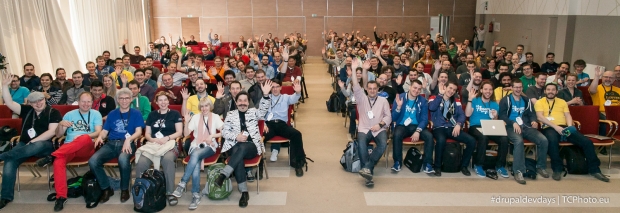Drupal Developer Days 2014 Szeged - behind the scenes
Breadcrumb
- Home
- PronovixBlog
- Drupal Developer Days 2014 Szeged - behind the scenes
Drupal Dev Days Szeged was a great opportunity for me to realize and take part in one of Kristof’s crazy ideas (well, almost as crazy as Drupalcon 2008 was ;) with some great people from the community. While the event turned out to be a success, I’ve learnt a lot that I would like to share with all future organizers through this blog post and other channels.

Thanks to all who were involved either behind the scenes or as participants, we made it happen together! While we plan to share event insights on the eu-drupal-foundations mailing list with potential future organizers, I’m also happy to help if you have specific questions, just send me an email.

Márta is an Operational Manager at Pronovix. She ensures the smooth daily operations of the Hungarian branch and its office in Szeged. She’s responsible for financial planning and managing budgets, makes sure that all Pronovix members have the equipment required to do their daily job, get their salary in time and have all the necessary paperwork done properly. She develops, implements and reviews administrative systems, organisational policies and procedures to improve quality and efficiency. She also takes part in the development and organization of training activities, such as the Pronovix ITrainee Program and the Pronovix Academy. In her free time, she enjoys travelling and discovering remote cultures and memories of their past. Besides, she likes spending quality time with family and friends.
Articles on devportals, DX and API docs, event recaps, webinars, and more. Sign up to be up to date with the latest trends and best practices.

